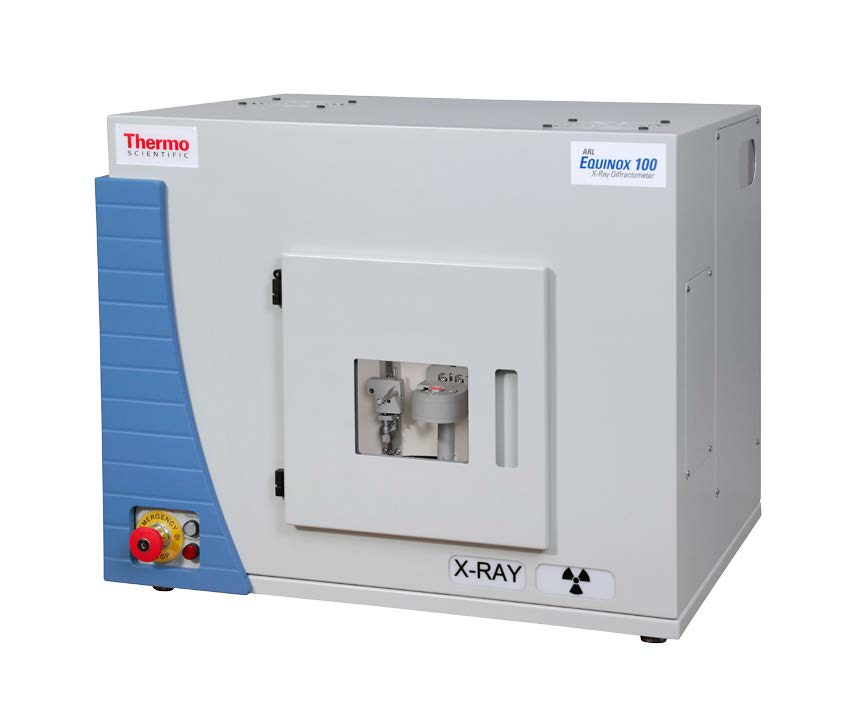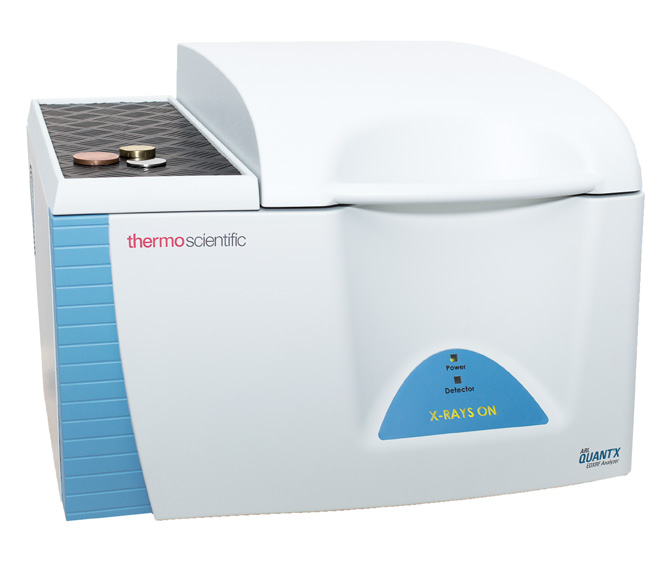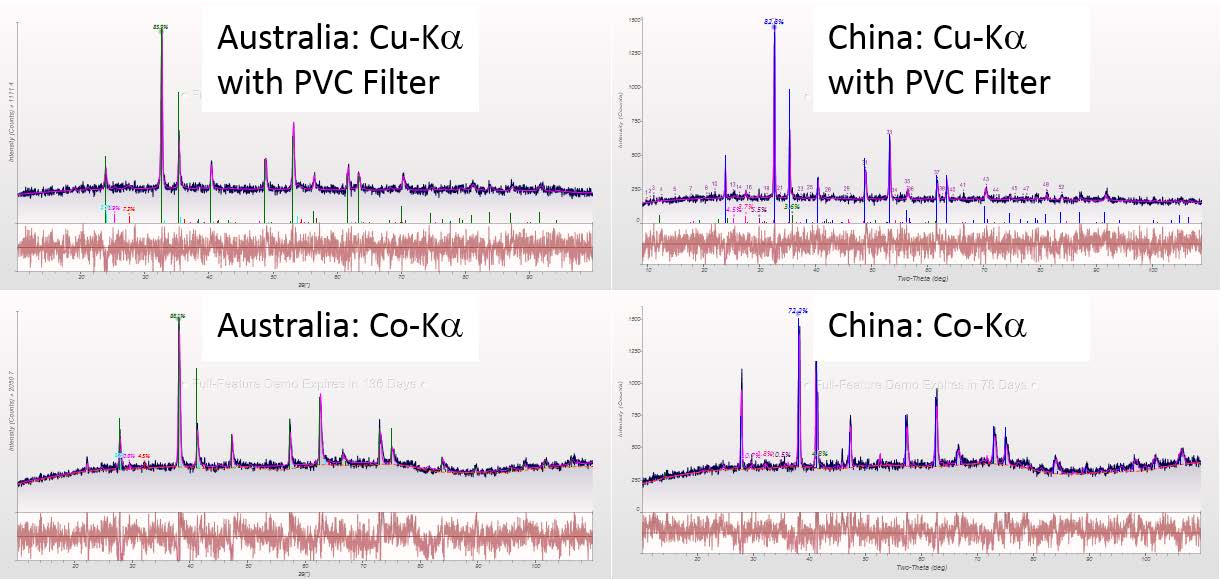Introduction
Ilmenite (FeTiO3) is the most important titanium ore, responsible for up to 47% of the total worldwide TiO2, a whitening pigment, production. The world’s largest producer of ilmenite ore is Australia together with South Africa, China and Canada. The ore occurs as two different morphologies, hard rock and heavy sand ilmenite, whereof the latter is more utilized. Ilmenite forms solid solution series with geikielite (MgTiO3) and pyrophanite (MnTiO3) and can more generally be written as (Fe,Mg,Mn)TiO3. For evaluation of the grade of the ore, it is crucial to know both the chemical and mineralogical composition of the sample, which are usually analyzed by X-ray fluorescence spectroscopy (XRF) and X-ray diffraction (XRD) respectively. XRD is most commonly performed using Cu-Kα (1.54 Å) radiation, which also excites the Fe-Kα (1.94 Å) line and therefore induces X-ray fluorescence, resulting in a noisy XRD pattern. A possible solution to this problem is to use Co-Kα radiation (1.79 Å) or by using a PVC filter in front of the detector, which absorbs the low energy fluorescence.
Instruments
The Thermo Scientific™ ARL™ EQUINOX 100 X-ray diffractometer employs a custom-designed Cu (50 W) or Co (15 W) micro-focus tube with mirror optics. Such a low wattage system does not require external water chiller or other peripheral infrastructure, allowing the instrument to be easily transported from the laboratory to the field or between laboratories.

Figure 1: ARL EQUINOX 100 X-ray diffractometer
The ARL EQUINOX 100 instrument provides very fast data collection times compared to other conventional diffractometers thanks to its unique curved position sensitive detector (CPS) that measures all diffraction peaks simultaneously and in real time. It is therefore well suited for both reflection and transmission measurements (Figure 1).
The Thermo Scientific™ ARL™ QUANT’X enegy-dispersive XRF spectrometer uses a highly sensitive silicon drift detector (SDD) to discriminate between the energy of the incoming radiation and therefore is able to measure all elements between Na (Z = 11) and U (Z = 92). it is equipped with a 50 W Rh or Ag tube which can be operated at voltages up to 50 kV. Conversion of spectra into elemental/oxide concentrations is achieved with the Fundamental Parameters (FP) based UniQuant standard-less package.

Figure 2: ARL QUANT'X EDXRF spectrometer
The rugged and compact design as well as low demand on peripheral support makes the ARL QUANT'X analyzer a perfect solution for industrial environments (Figure 2).
Experimental
For XRD measurements, samples of ilmenite ore from China and Australia were ground and measured in reflection geometry for 15 min under Cu-Kα radiation with a PVC filter, as well as Co-Kα radiation to reduce the fluorescence from Fe. Qualitative and quantitative analyses were carried out using MDI JADE 2010 with the ICDD PDF4+ database. Before EDXRF test, samples were ground, screened to 200 mesh with vibromill, and pressed. The EDXRF semi-quantitative analysis results were obtained using exclusive Thermo Scientific™ UniQuant™ software.
Results

Figure 3: Diffraction patterns of ilmenite ore from Australia (left) and China (right) measured with Cu-Kα and PVC filter (top) and Co-Kα bottom
Qualitative and quantitative phase analysis of Ilmenite samples yield comparable results with both Cu-Kα radiation with PVC filter, as well as Co-Kα radiation. In Table 1 chemical composition from XRF and XRD (c.f., Figure 3) is compared. Unfortunately, there are solid solutions for various compounds in the samples and some compounds might appear amorphous which limits the capabaility of XRD measurements. Nevertheless, it is possible to clearly identify the primary mineralogy of the samples.
|
Element |
Úc (%) |
Trung Quốc (%) |
||||
|
XRF |
XRD |
XRF |
XRD |
|||
|
Cu |
Co |
Cu |
Co |
|||
|
MgO |
0.27 |
- |
- |
1.19 |
3.0 |
5.3 |
|
Al2O3 |
5.27 |
- |
- |
5.77 |
1.3 |
2.5 |
|
SiO2 |
1.21 |
- |
- |
5.58 |
3.9 |
8.5 |
|
CaO |
0.01 |
- |
- |
2.73 |
1.4 |
2.7 |
|
TiO2 |
42.00 |
54.3 |
50.4 |
39.87 |
47.2 |
46.6 |
|
MnO |
1.52 |
- |
- |
0.92 |
3.7 |
1.8 |
|
Fe2O3 |
48.14 |
50.2 |
54.2 |
42.53 |
43.6 |
38.0 |
|
ZrO2 |
0.16 |
- |
- |
0.02 |
- |
- |
Table 1: Chemical composition of ilmenite samples from Australia and China measured with XRF
The mineralogy of the samples exhibit clear differences between the deposit locations. The ore from Australia only contains expected minerals (valuable raw materials) whereas there are slight differences between Cu-Kα and Co-Kα measurements. The overall trend is the same in both cases (c.f., Table 2).
|
Phase |
Công thức |
Thành phần (%) |
|
|
Cu |
Co |
||
|
Ilmenite |
FeTiO3 |
85.9 |
86.1 |
|
Hematite |
Fe2O3 |
5.0 |
8.9 |
|
Rutile |
TiO2 |
7.2 |
4.5 |
|
Anatase |
TiO2 |
1.9 |
0.6 |
Table 2: Phase composition of ilmenite from Australia
Ore samples from China (c.f. Table 3) show a wider variety of mineral phases, which are all related to ilmenite deposits. There is still a difference in the composition from Cu-Kα and Co-Kα radiation, which is most likely due to the increased resolution obtained with Co-Kα radiation compared to Cu-Kα.
|
Phase |
Công thứcFormula |
Thành phần (%) |
|
|
Cu |
Co |
||
|
Ilmenite |
FeTiO3 |
82.8 |
72.2 |
|
Diopside |
CaMg0,5AlSi1,5O6 |
5.5 |
10.5 |
|
Pseudobrookite |
(MgTi2)O2 |
4.5 |
10.7 |
|
Browneite |
MnS |
3.7 |
1.8 |
|
Lizardite |
Mg3Si2O9 |
3.0 |
4.8 |
Table 3: Phase composition of ilmenite from China
Conclusion
The ARL EQUINOX 100 in combination with the ARL QUANT’X analyzer is a very suitable analytical solution to fully investigate ilmenite ore samples and determine their quality. The addition of a PVC filter to the detector of an instrument equipped with a Cu-Kα source is a suitable configuration to reduce Fe fluorescence enough to obtain measurements which will allow qualitative and quantitative phase analysis. Nevertheless, by using Co-Kα radiation, it is possible to collect XRD data with better resolution, which therefore yields a more precise quantification, especially if phases are involved which contain closely spaced reflections or heavy peak overlap. MDI JADE is an easy to use and fully industrialized Rietveld based software suite.
XRD data is processed in combination with the PDF4+ database enabling the user to easily qualify and quantify samples, even in batch operation mode.
The UniQuant option for XRF on the other hand is a suitable program to analyze the chemistry of any kind of unknown or known samples without requiring calibration measurements beforehand.
******************************************
For more infomation, please contact:
Red Star Vietnam Co., Ltd.
Email: info@redstarvietnam.com
Experimental